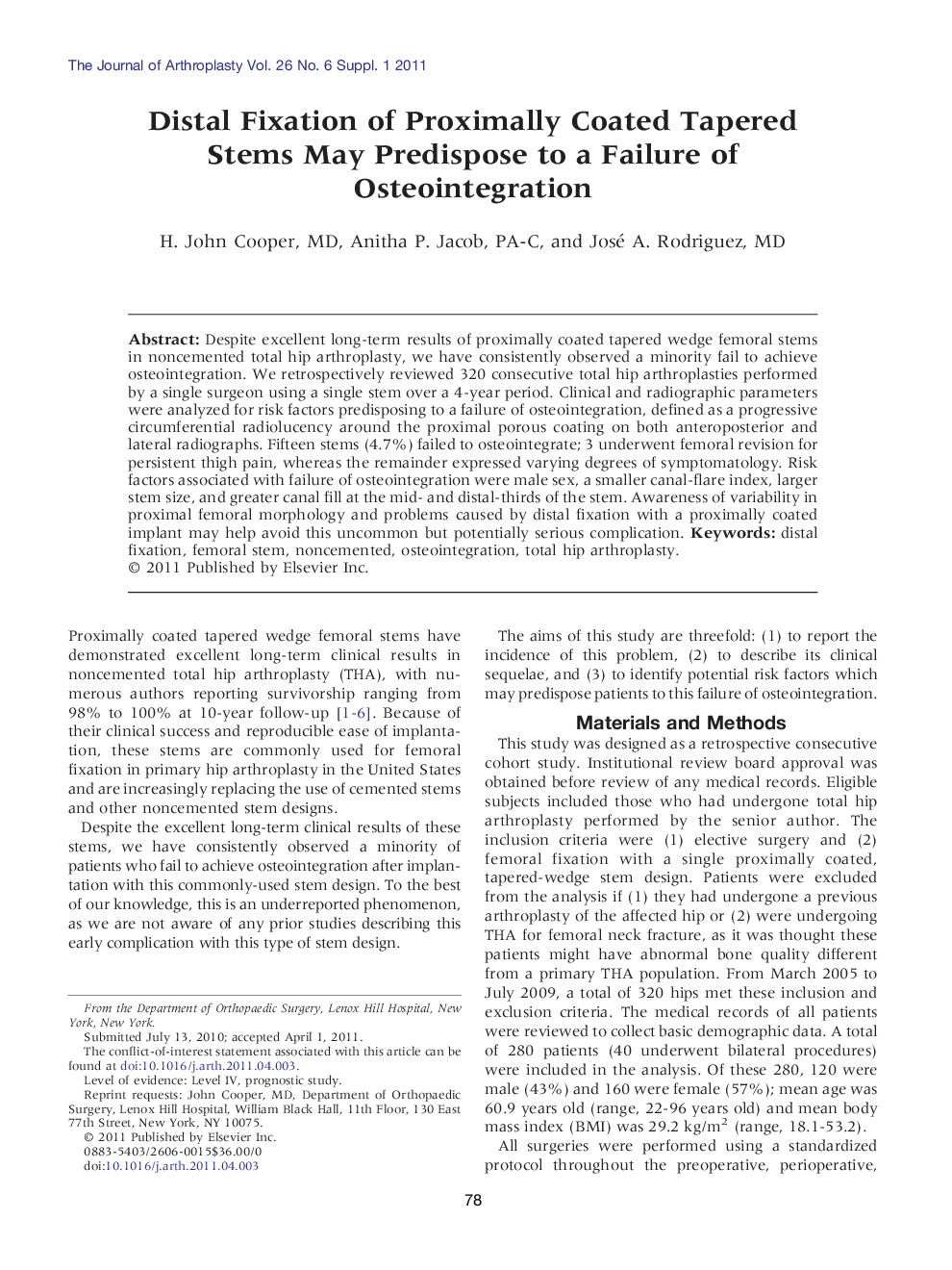| Article ID | Journal | Published Year | Pages | File Type |
|---|---|---|---|---|
| 4062982 | The Journal of Arthroplasty | 2011 | 6 Pages |
Despite excellent long-term results of proximally coated tapered wedge femoral stems in noncemented total hip arthroplasty, we have consistently observed a minority fail to achieve osteointegration. We retrospectively reviewed 320 consecutive total hip arthroplasties performed by a single surgeon using a single stem over a 4-year period. Clinical and radiographic parameters were analyzed for risk factors predisposing to a failure of osteointegration, defined as a progressive circumferential radiolucency around the proximal porous coating on both anteroposterior and lateral radiographs. Fifteen stems (4.7%) failed to osteointegrate; 3 underwent femoral revision for persistent thigh pain, whereas the remainder expressed varying degrees of symptomatology. Risk factors associated with failure of osteointegration were male sex, a smaller canal-flare index, larger stem size, and greater canal fill at the mid- and distal-thirds of the stem. Awareness of variability in proximal femoral morphology and problems caused by distal fixation with a proximally coated implant may help avoid this uncommon but potentially serious complication.
